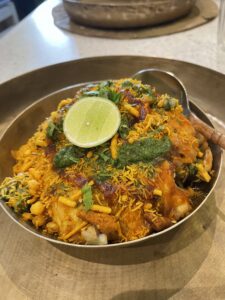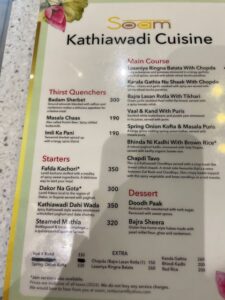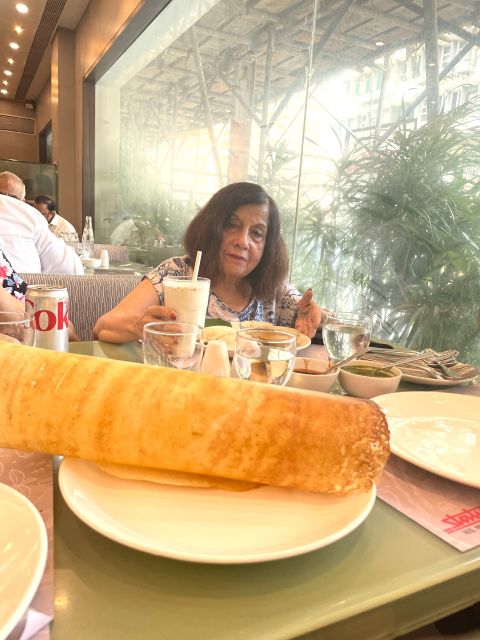
India Is The Globe’s Largest Vegetarian Foodie Club
A Veggie Food Diary: New York to Mumbai to New Delhi
By Lavina Melwani
The Vegetarian Food Chronicles – Feasting in Delhi and Mumbai
I have just come from Shiv Sagar, a humble vegetarian restaurant in Mumbai where you get hundreds of choices including South Indian and North Indian but also Jain food, Mexican specialties, pizza, burgers and Chinese dishes every single day – including the All-You-Can-Eat Thali which is refilled free as fast as you can finish it! The South Indian menu alone numbers 74 options. Every item is pure vegetarian.
If I was to go back to India every single year for the next decade, I still would not be able to eat all the vegetarian special dishes that seem to crop up from the country’s rich heritage of past, present and future menus. Every time you open your mouth, you seem to be offered a new taste, a new fragrance and a new experience.
Indeed, for vegetarians, India is the globe’s largest Foodie Club with hundreds and thousands of possibilities. Living in the US, in the old days, there were few vegetarian options except for salad, sides and the inevitable pizza. Even now, depending on the mainstream restaurant you go to, you may have only one vegetarian dish on the menu – take it or leave it.

The Vegetarian Food Stories of India
India means many things to Indians, but perhaps the most powerful idea is food, and food shared with family. For me home food has always meant the joy of eating food cooked by mothers and grandmothers, as well as by old cooks who have been with the family for many years.
The best thing about India is the diverse people you meet, and it is through them you learn so many unforgettable food stories. I ate at the home of a lovely 100-year-old woman who is full of zest, and lives with her extended family in Bandra. The home is full of Ganeshas and has good vibes. She starts the morning with a sloka from the Bhagwat Gita and makes herself a cup of chai. We ate a simple meal of daal, chawal and potato sabzi and she was so joyful and happy that the day could not but go well. She has lived a life of many ups and downs, yet she shows the true meaning of acceptance, karma and gratitude.
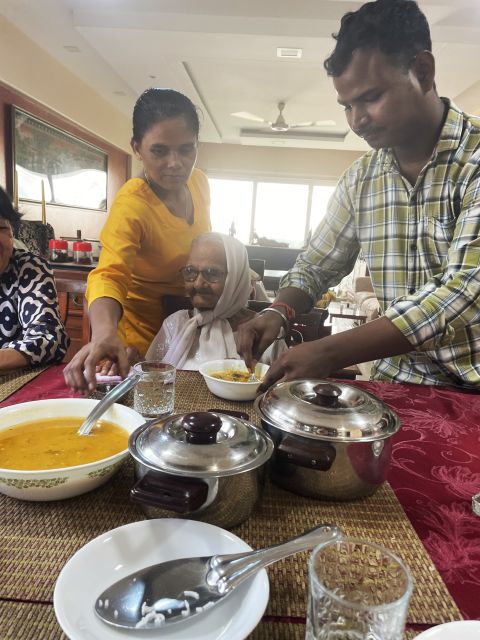
I also ate a grand meal with the rich and famous at a sparkling big fat Indian wedding in Delhi. It was an experience of rich people, rich food and rich jewels and opulence. There were hundreds of dishes, both non-vegetable and vegetarian, with a lineup from around the globe, with special stations of every kind of food, from appetizers to entrees and desserts. In the end, you were satiated because you can only eat what your stomach can digest!

On yet another day I ate in the company of bubbly joyful schoolchildren in a slum colony in Delhi and that was quite an experience too. The cook had made the entire meal in an open-air tin shed kitchen for the 200 children, and we all ate the simple nutritious daal, rice and sabzi together. This is often the only full meal these children get to eat, and it was actually quite delicious where we found ourselves going in for seconds.
I also got a chance to eat with some European diplomats, dear old friends who now live in Mumbai, and again, it was a very different kind of meal, but still delicious. It was bowls of fresh homemade carrot soup made by her Indian cook of many years, with fresh salads and a baked pasta dish, all beautifully served on Indian linen and crockery. It was a joy to see her home shrine dedicated to all the Gods she had encountered in India and her travels.
Then I ate with a childhood friend – life had taken us through good times and bad – but here we were, survivors, eating all the home-made vegetarian Sindhi and Punjabi dishes that we loved and exchanging notes while the cook kept bringing out fresh, puffy hot Gujarati rotis.
We also ate on the way to Palghar, 40 miles out of Mumbai. We were visiting a non-profit educational project, and one of the delights is that you get to eat at roadside places, in small dhabas. And here we ate a delicious South Indian meal in the middle of a busy highway, topped with filter coffee.
Everywhere one went, food was always offered, even if it was in a government municipal school where we had gone to check on doing a partnership with them. As a matter of fact, the team just opened up three little containers of what they call ‘namkeens’, and the mandatory hot tea also came so everywhere one had to eat and drink, which is a wonderful way to live.

Vegetarian Food Shared With Family
India means many things to Indians, but perhaps the most powerful idea is food, and food shared with family. For me, home food has always been the joy of eating food cooked by mothers and grandmothers, as well as by old cooks who have been with the family for many years.
For me, there are memories of food which are decades old, where I remember in my newly-married sister’s home they would make traditional chunky Sindhi wheat rotis for dinner – they would be flaky and rich with oil, and would come to the table, sizzling hot and already divided into two pieces so two family members could eat them instantly. They had somehow calculated that it takes a person a certain amount of time to eat just half, and so rather than let the other half get cold, It could be shared. Fresh hot ones would be coming to the table as people got ready to eat the second half.
I

In India, they say the food styles and ingredients change every few miles, so eating in India can be an on-going adventure. There’s Old Delhi and there’s New Delhi, and all the little diasporas where you get Nepali, Naga, Tibetan and Chinese food, which is all part of the Great Indian feast. When close friends hear that you have come to the city, they often send in the specialty of their home, so that really, it’s like feasting every day without there being any real reason for celebration.
Growing up in Delhi, we were quite savvy about where you would get the best street food – sizzling aloo tikkis ( potato patties) with chana daal embedded inside them. The vendor would expertly grill the tikkis on a large tawa full of hot oil and then slash them in the middle, smearing tamarind and mint chutney over them. We would go to the canteens near the sandstone fountains in India Gate to eat this delicacy. The other hot spot was in the by lanes of Janpath in Connaught Place, so it is always a delight to go back to Delhi and see how many of the old spots are still there.
Indeed, there’s no end to them. Delhi is embedded with chaat shops in all the suburbs like Green Park, Sunder Nagar and Greater Kailash, and everyone has their favorites. These tasty treats don’t cost a lot and have allowed the lower middle-class to join the foodie bandwagon.
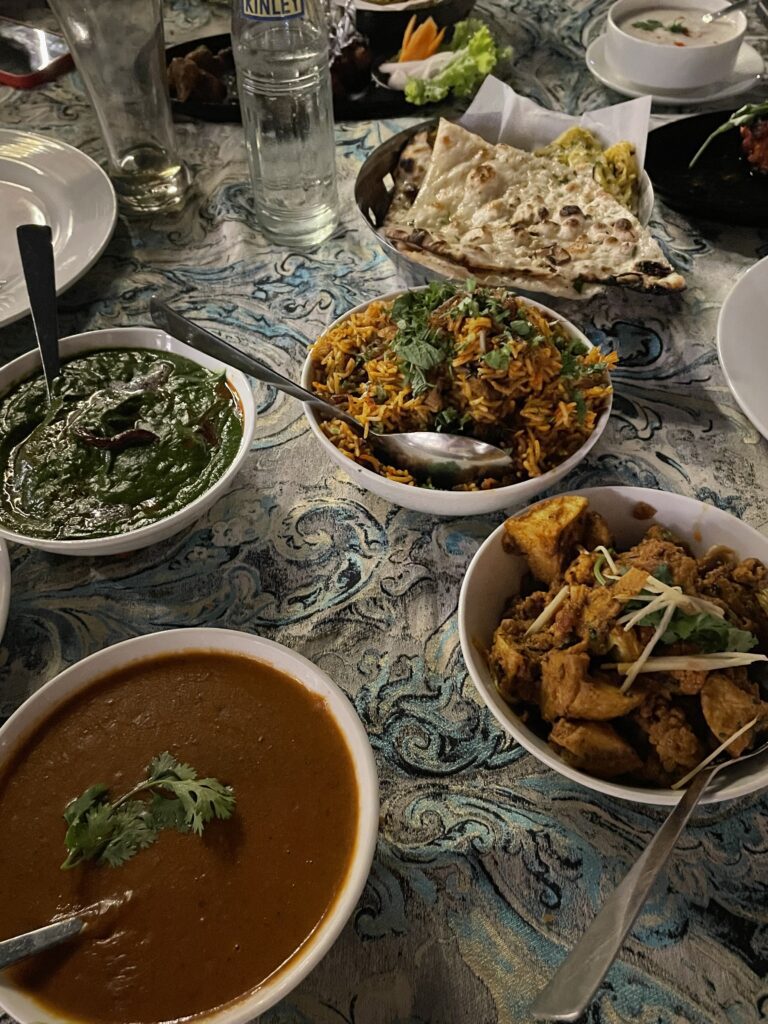
The British Raj’s Veggie Food in Delhi and Mumbai
And then there’s the treat both in Bombay and Delhi, for people who are fortunate enough to be members of private clubs. It is a whole different thing, where in the very British colonial style, the waiters keep bringing all the things that you ask for, whether it’s cheese toast or cucumber sandwiches or peanut chaat, everything keeps coming. You also get coconut water in the shell right there. And to eat indoors in the club is to get every kind of meal, from European to Thai to Indian and all that again at very reasonable club-sanctioned prices. The club culture has adapted very well to the vegetarian preferences of clients, and besides non-vegetarian feasts, there are substantial choices for the vegetarian eaters.
Vegetarian food at Home and Restaurants
But even more than eating out in India, I like to eat in!
Since most of the families that I know have such great cooks, a meal at home is a feast. So, whether it was in Delhi or in Mumbai, eating was always the highlight of the day. It can be something simple, whipped up at home, whatever our hearts desire, which is the wonderful thing about India, that you can just think of what you’d like to eat, and it’s immediately on the table.
Here in the end, the meals that I enjoyed the most were the ones which had the home touch, even a big gathering of the extended family at home had all the dishes that one could think of with so many different ways of even making a simple thing like paneer. So, it was quite delicious eating the food of different hands, different home cooks, including things like Indonesian and Thai dishes. Delhi has become like a little New York, where all kinds of food is available, and women take pride in cooking themselves, or getting their cooks to make the dishes for them. So many brides have settled in India from foreign lands that those cuisines are embedded in family favorites.
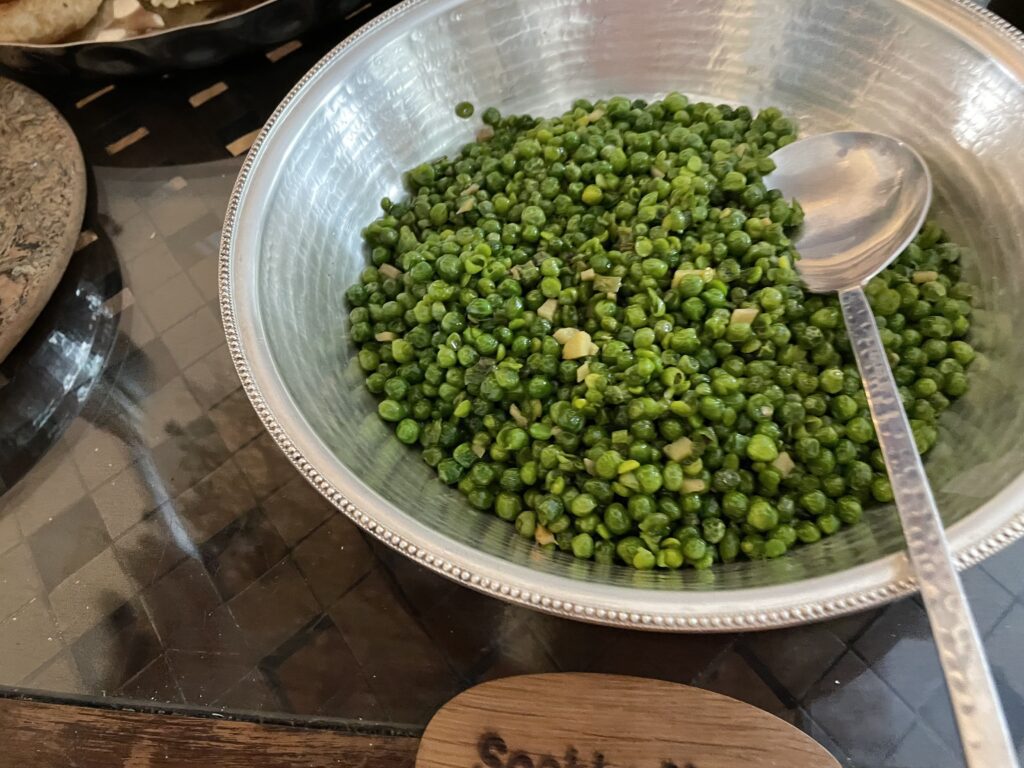
Other delights are to wander in the busy markets like Lajpat Market or Khan Market in Delhi, and snack on everything from Pao Bhaji (A Maharashtrian favorite snack) to chikku ice-cream. There’s lots to take back home, be it dried fruit or papads. It was funny meeting an Indian-American family in a crowded Delhi market, who were also tasting the nuts to see if they wanted to take them all the way back to America. Normally, the quality is supposed to be excellent because these dried fruits come from Afghanistan. But here, the Indian-American man tried a few and he said he much prefers Costco! Travelers bring their own prejudices and likes into the story.

The Veggie Food of Mumbaiwallas
While I do know Delhi like the back of my hand, the bustling City of Mumbai was a relatively new and fun experience for me. To live in this magical City by the Sea, you have to have a big appetite and want to eat something new every single day. Wherever you look, there are food stories going on, city streets populated by coconut sellers and sugar cane juice makers and roasted peanut vendors, each with his own back story. To walk, you have to walk past all that in South Bombay, and there are diverse restaurants lining both sides of the street. Food is your constant companion and your muse.
There is a special little cog which keeps the whole of Mumbai moving. Think of the very well organized Dabbawallas who systematically deliver food to office-going husbands from their wives – and never mix up a box. Or the legendary yellow taxi drivers who always get you where you want to go and keep the city moving. Then there are the bais of Mumbai – freelance women workers in their colorful nine-yard sarees and nose-pins who keep several homes running at a pittance of what it would cost you to hire a full-time cleaner or cook.
These Maharashtrian women are an indispensable resource for many middle-class people who cannot afford to have full time cooks and serving staff. They are part-time workers who start early in the morning and clean several homes like clockwork, then still go back home to their own homes to clean and cook and look after cranky – often alcoholic -husbands, and children. They are feisty women with a can-do spirt about them and able to make a lot out of nothing.
At my niece’s home, the Bai wouldn’t let anything be thrown away, even day-old rotis. She would chop up a whole lot of onions, green chilies and tomatoes, and cook up the most amazing concoction, immersing the stale rotis in this sauce, redolent with curry leaves. She called it Kanda Roti, (Onion Roti) and she much preferred it to any other breakfast. I got a taste for it and often shared her dish.
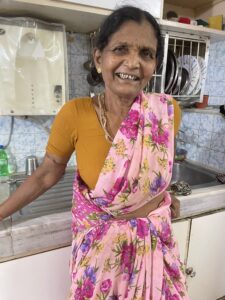
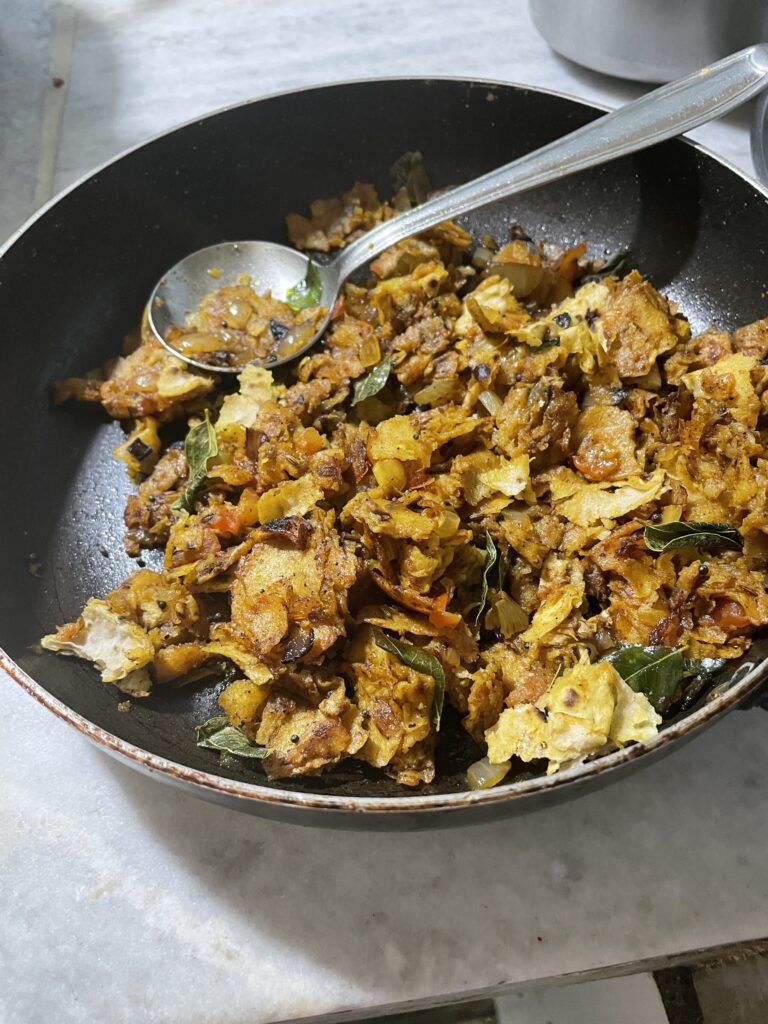
There is a male version of the bais, part-time men cooks who come in and cook for you and move on. My niece has a cook who comes for about 40 minutes and makes her whatever she wants, including hot rotis, which are kept in the box ready for her lunch.
And because he works full-time in another well-established home, the cook has a big repertoire and can make for her whatever she desires. Mumbai is technically savvy and well-connected and the convenience for the Bombay housewife is that you can call for the vegetables by phone, and the vendor delivers them to you immediately. Since even the garbage collector has a cell-phone, everybody is reachable, be it a hawker on the street or a food vendor. The local store also delivers whatever you want at any time of the day or night. Everyone is on their feet and very street-smart. Even the drivers are available part time. If you need to go, you can call up for a driver to drive your car wherever you need it to go.

I have not even got into the world of topnotch restaurants in a cosmopolitan city like Mumbai because that’s a whole different story for another time. I did take my niece to Mag Street, one of the fancy, new-gen restaurants where food is served American style, and the price is also much higher. As we walked along that street in Colaba in South Mumbai, I also popped into Neuma, a restaurant owned by Bollywood celebrity Karan Johar and I could understand why people would be drawn to a celebrity restaurant.
Eating Like a Mumbaikar
On this trip my main attraction was merging into the marketplace with regular Mumbaikars, and buying mundane things like clay diyas and papayas. In these crowded thoroughfares, green chilies, limes and coriander are laid out like emeralds on a sheet and bargaining is the order of the day. There is a lot of drama and play-acting between the vendor and the buyer, and the battles are quite drawn out, yet everybody leaves happy. The vendor himself has actually made the sale he wanted, and the buyer is happy she got some discount and saved her face.
I also love the idea of a Kirana store, which is not like big supermarkets or anything. It is a neighborhood store where everything is available, whether you want fresh vegetables, fruit, Diet Foods, Snacks, packaged food, everything is there, and although the place seems like a congested warren, they know exactly where everything is kept, and will get you just about anything that you need. They even deliver at odd times of the day and night.
But the biggest delight of Mumbai were the simple people’s restaurants like Samrat, Status and the Shiv Sagar chain, all specializing in Vegetarian food, often the all-you-can eat Gujarati or Rajasthani thali. In Delhi I had eaten at Andhra Bhavan, which is a dream come true for lovers of South Indian food where you can eat as much as you want of dosas and idlis for a pittance.

Shiv Sagar, the amazing all-cuisines-under-one-roof that I went to in Mumbai, is one where everyman is king – with a menu that boasts more than you can ever eat, including paneer served in every form imaginable from Punjabi to Chinese to Italian. It was a delight to see whole families gathered together, business associates, all being able to have a good meal without having to empty their pocketbooks. I also ventured to Soam, a small place in Chowpatty, to try a new cuisine – Kathiawadi. This is a fiery and spicy cuisine within the larger more bland Gujarati cuisine and uses a lot of garlic, onions and spices and was a new experience for me.
The Hospitality of Indians
To go to anybody’s house at teatime means you get a whole lineup of things, including Namkeens, which are salty snacks, sandwiches and some mithai. Often, they make the grand gesture of giving you a box of mithai to take home. Food is very much a part of every ritual, a cup of chai and some snack is always given, no matter where you go. Even a villager will offer you at least a clay cup of hot chai and maybe a small package of precious Glaxo biscuits.
The trouble is in that in India, a stay of a month is nothing. You need a lifetime to be eating, and even then, you would not have tried every dish there is. Here I have not even mentioned the countless temples where, no matter which temple you go to, there’s always prasadam. You cannot come away without being given something sweet and delightful by the Almighty to bless your day.
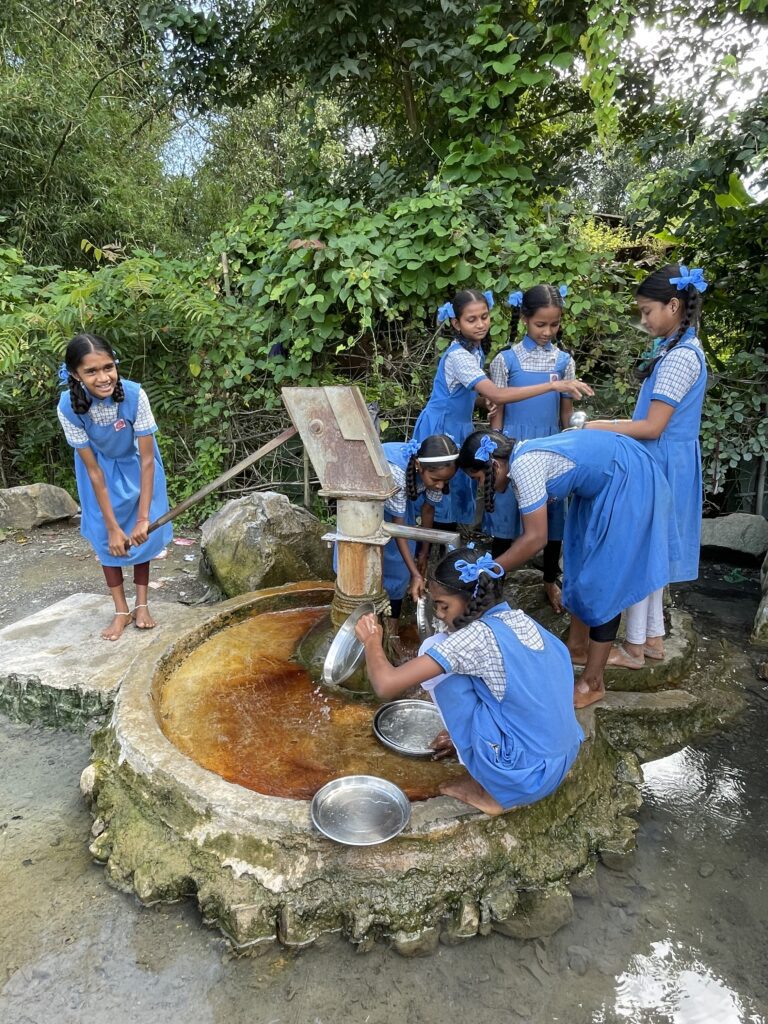
Government school girls cleaning their thalis after lunch
A once starving country has now become a self-sufficient unending food basket which contributes to other nations. God certainly has blessed the Indians with great culinary talents for utilizing their wholesome grains and lentils and vegetables to create an unending array of healthy dishes. Indian women seem to be instinctive cooks having learnt from their mothers and grandmothers before them, and Indian men who cook for a living have used all the tricks of the trade to create every kind of meal from simple to princely and the entire spectrum to keep eaters engaged and happy.
Indian cooks give you just what you need when you need it, especially soothing daals, rice and vegetarian snacks with a wonderful comfort level. And even at home, the feasting never stops. There are different kinds of desserts being served, and then there’s tea from Assam, coffee from the South, lassi from Punjab and sweet rose syrups and sugar cane juice. You can’t possibly refuse that home-made laddoo! You can’t say no to that last piece of mithai! In the end you have to raise your hands in helpless surrender. Enough is Enough!
(This article was first published in Hinduism Today in Hawaii.)
Photos by Lavina Melwani ( The quality of the photographs is not as good as it should be because the photographer was distracted by all the food and the urge to eat it while it was hot and delicious!)
Related Article:
Indian Vegetarian Food – from Southall to Buckingham Palace

